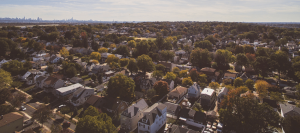New residential home sales continued on a downward path in January, after a 9.3 percent month-over-month decrease in December.

According to the U.S. Census Bureau and the U.S. Department of Housing and Urban Development (HUD), new single-family home sales declined to a seasonally adjusted rate of 593,000 — a 7.8 percent month-over-month and 1.0 percent year-over-year decrease in home sales.
The estimate of new homes for sale at the end of January was 310,000, which represents a 6.1-month supply at the current sales rate.
Realtor.com senior economist Dr. Joseph Kirchner says January’s new residential sales statistics are underwhelming, especially after a few months of consistent growth in the construction sector.
“Though both new home sales and prices dipped for the second month in a row, these lower prices don’t negate earlier price gains that have put new homes out of reach for the majority of buyers,” said Kirchner in an emailed statement. “This is disappointing given the importance of new construction in powering overall home sales.”
 Stop giving money to your competition
Tom Ferry’s 7 tips for turning leads into commissions READ MORE
Stop giving money to your competition
Tom Ferry’s 7 tips for turning leads into commissions READ MORE
“Today’s report provides further evidence that builders are slowly shifting toward more moderately priced homes,” he added. “The drop in sales may be due to saturation in the upper price range of the market, which should compel builders to follow the market and build more moderately priced homes.”
“We may be beginning to see this with the largest drop for new home sales in homes priced above $500,000.”
Other data from the Census Bureau and HUD:
The median sales price of new homes sold in January was $323,000. The average sales price was $382,700. The Northeast experienced the greatest dip in residential home sales (-33.3 percent), followed by the Midwest (-15.4 percent), South (-14.2 percent). Only the West experienced an increase (1.0 percent).The Census Bureau and HUD use sample surveys to collect data for their home sales, which means this data is subject to sampling variability as well as the typical statistical variance. The survey is based on a sample of houses pulled from building permits. “Sales” are defined as deposits taken or sales agreements signed, not necessarily closings.
Source: click here
















